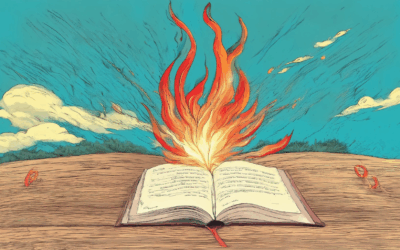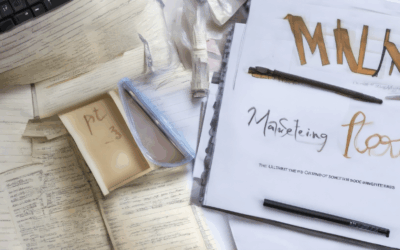Understanding the literary storytelling structure is a cornerstone of masterful writing, enabling authors to craft compelling narratives that resonate deeply with readers. Whether you’re a seasoned writer or just beginning, grasping the essential components of storytelling can unlock new dimensions of creativity and engagement. This comprehensive guide delves into the intricate layers of narrative structure, exploring timeless frameworks like the five-stage storytelling process, the five Cs of effective storytelling, and the fundamental principles that underpin successful literary works. From classic structures to modern applications, discover how these elements can transform your approach to writing and leave your audience captivated. With practical insights and real-life examples, this guide offers actionable strategies to elevate your storytelling skills and create stories that endure.
Key Takeaways
- Master Literary Structures by focusing on dominant elements like setting, theme, character, or plot to shape your narrative effectively.
- Craft Compelling Stories using a three-act structure, widely applied in novels and screenwriting, to balance exposition, rising action, climax, and falling action.
- Experiment with Narrative Modes to tell stories chronologically, non-linearly, or through multiple perspectives, enhancing engagement and uniqueness.
- Uncover Deep Themes to convey meaningful messages that resonate with your audience, evolving as the story progresses.
- Apply the 7-Point Story Structure for a structured approach to storytelling, guiding you from setup to fallout with a clear, engaging journey.
- Essential Story Elements include theme, plot, characters, setting, conflict, point of view, tone, and resolution, forming the backbone of any compelling narrative.

The 5-Stage Structure of Storytelling
Telling a story effectively involves moving through distinct phases that captivate audiences and maintain engagement. Here’s a breakdown of the five essential stages:
1. Exposition
The exposition sets the stage for the story. It introduces the characters, setting, and background information necessary to understand the plot. This phase answers questions like “Who is involved?” and “Where does the story take place?”. Without a strong exposition, the audience may struggle to connect with the narrative.
2. Rising Action
Next, the rising action builds tension and propels the story forward. This is where conflicts arise, challenges are faced, and character development occurs. The rising action keeps the audience invested, often leading to the climax.
3. Climax
The climax is the peak of the story, where the central conflict reaches its most intense point. This is where the protagonist faces their greatest challenge or makes a pivotal decision. The climax is what draws the audience in and creates lasting memories.
4. Falling Action
Following the climax, the falling action resolves the main storyline. This phase wraps up loose ends and shows the consequences of the events. It answers questions like “How did the character resolve their problem?” and “What happens next?”. A well-crafted falling action leaves the audience satisfied.
5. Resolution
The resolution concludes the story, providing closure. It highlights the outcomes of the narrative and reinforces the themes explored earlier. A strong resolution leaves the audience with a sense of completion and fulfillment.
Mastering these stages allows storytellers to craft engaging, immersive stories that resonate with audiences long after the tale is told.
What are the 5 C’s of storytelling?
- Character: The heart of storytelling lies in well-defined characters. They drive the plot, showcase personality, and allow readers to connect emotionally.
- Context: Setting and background information provide the foundation, helping to establish the story’s world, time period, and cultural environment.
- Conflict: A central issue or challenge propels the narrative forward, creating tension and guiding character growth through the story arc.
- Climax: The peak moment where the story reaches its highest point of excitement, often resolving the main conflict or presenting a significant turning point.
- Closure: The conclusion ties everything together, offering resolution, reflection, or leaving the audience with something to ponder.
The five Cs of storytelling—Character, Context, Conflict, Climax, and Closure—are essential elements that work together to create an engaging, memorable, and impactful narrative. By focusing on these elements, storytellers can craft compelling tales that resonate with audiences.
For more insights into storytelling techniques and resources, visit our literary platform at jameswhitfieldthomson.com .

What is the Basic Structure of Storytelling?
Storytelling is a universal human activity that has evolved over thousands of years into a sophisticated art form. While stories can take many forms, they often follow a recognizable structure that helps in engaging audiences and conveying meaningful messages. Below is a breakdown of the basic structure of storytelling:
- Exposition: This is the foundation of the story. It introduces the setting, characters, and the central conflict or problem. Through this phase, the audience learns about the world and the characters involved.
- Rising Action: This is where the story builds tension and leads the audience closer to the climax. It involves a series of events that escalate the conflict, creating curiosity and anticipation.
- Climax: The peak of the story where the central conflict reaches its highest point. This is often the most suspenseful moment, where the outcome is uncertain and the stakes are the highest.
- Falling Action: After the climax, the story begins to resolve. This phase wraps up the loose ends and shows the consequences of the events that have transpired. It may involve a resolution of the central conflict or the acceptance of a new status quo.
- Resolution: The final part of the story where the plot is resolved. It answers any unanswered questions and leaves the audience with a sense of closure. The resolution can be happy, bittersweet, or open-ended, depending on the story’s goals.
Understanding and mastering these elements allows writers to craft compelling narratives that resonate with readers. By carefully constructing each phase, storytellers can guide their audience through an emotional journey that leaves a lasting impact.

What are the 4 Literary Structures?
The four primary literary structures are essential components of storytelling and can significantly influence the development and engagement of a narrative. These structures provide a framework for authors to organize their ideas, characters, and plotlines effectively. Below is a breakdown of each structure:
Dominant Element Structure
This structure emphasizes one central element that drives the story forward. While all stories have elements like setting (milieu), theme (idea), character, and plot (event), one of these usually takes precedence. For example: – A story might revolve around its setting, like “Gone with the Wind,” which is deeply rooted in the Southern American context during the Civil War. – Another could focus on its theme, such as “To Kill a Mockingbird,” which explores justice and moral growth. – Characters often dominate in psychological dramas, like “Hamlet.” – Plots drive action-packed stories, such as thrillers or adventure tales.
Story Arc Structure
The Story Arc Structure outlines the progression of a narrative over time, typically divided into three acts. This approach ensures a balanced and engaging story development:1. Exposition : Introduces the setting, characters, and background information.2. Rising Action : Develops conflicts and builds suspense.3. Climax : Reaches the peak of tension and resolution.4. Falling Action : Concludes the story, resolving loose ends.
This structure is widely used in screenwriting and novel writing to maintain audience interest.
Narrative Mode Structure
Narrative mode refers to the way a story is presented to the reader. There are three primary modes:1. Linear Narrative : Stories told in chronological order, as in “The Great Gatsby.”2. Non-Linear Narrative : Stories that jump between past, present, and future events, such as “House of Leaves.”3. Multiple Perspectives : Narratives that shift between different characters’ viewpoints, such as “The Kite Runner.”
Each mode impacts how the story unfolds and engages the reader.
Thematic Models Structure
Thematic models focus on the underlying ideas or messages of a story. These themes often emerge through the interactions of characters and their environments. Examples include: – “The Catcher in the Rye” explores alienation and identity. – “1984” critiques totalitarianism and surveillance. – “Beloved” delves into memory, identity, and slavery.
Themes can evolve as the story progresses, offering deeper insights into human experiences.
Writing Tips
Understanding these structures can enhance your writing by helping you: – Choose a dominant element or theme to shape your story. – Organize your narrative in a logical arc. – Experiment with different narrative modes to find the most engaging style for your work. – Identify and develop themes that resonate with your audience.
For more insights into crafting compelling narratives, visit jameswhitfieldthomson.com .
What is the 7 Point Story Structure?
The 7-point story structure is a narrative framework created by Dan Wells, designed to help writers construct stories in any genre. This method simplifies the storytelling process while still offering a robust structure for developing complex plots. Below are the seven key components of this structure:
1. Setup
The setup introduces the protagonist and establishes the world they inhabit. This section sets the stage for the audience, providing necessary background information and hooking the reader’s interest.
2. Inciting Incident
This is the catalyst that propels the protagonist into the adventure. A significant event disrupts their normal life, forcing them to take action and embark on the journey.
3. Decision
The protagonist faces a critical choice. They must decide how to respond to the inciting incident, often weighing the costs of different actions and committing to a path forward.
4. Gathering the Team
As the protagonist moves forward, they assemble a group of allies or companions who will assist them in overcoming challenges. These relationships add depth to the narrative and provide support during difficult moments.
5. Confrontation
The climax occurs as the protagonist confronts the antagonist or the central conflict. This is where the stakes are highest, and the protagonist must utilize everything they’ve learned to resolve the tension.
6. Resolution
After the confrontation, the story reaches its conclusion. The protagonist may face final battles, make sacrifices, or achieve personal growth. The resolution ties up loose ends and leaves the audience with a sense of closure.
7. Fallout
Post-resolution, the protagonist deals with the aftermath of their journey. This phase examines the long-term effects of their actions and experiences, allowing for character development and reflection.
How to Apply the 7-Point Story Structure
Writers can tailor this structure to fit their specific needs, whether they’re crafting a high-stakes thriller, a heartfelt drama, or an epic fantasy saga. By following these seven beats, authors can create engaging, emotionally resonant stories that captivate readers.
For more insights into storytelling techniques, visit James Whitfield Thomson , where we explore the art of writing, narrative development, and innovative approaches to crafting compelling stories.

What Are the 8 Story Elements?
The foundation of any compelling narrative lies in its elements, which work together to create an engaging and memorable story. Here’s a breakdown of the 8 essential elements of a story:
- Theme : The central idea or message of the story. It guides the plot and gives the story its purpose. Examples include friendship, redemption, or exploration.
- Plot : The sequence of events that occur in the story, driving it forward toward its resolution. It includes acts, conflicts, and climaxes.
- Characters : The individuals who populate the story, each with their own motivations and arcs. They play crucial roles in developing the plot.
- Setting : The time and place where the story unfolds. The setting can shape the tone and influence character actions.
- Conflict : The problem or challenge the protagonist faces. Conflict creates tension and propels the story forward.
- Point of View (POV) : Who tells the story? The first-person, omniscient, or limited third-person perspectives all offer unique storytelling experiences.
- Tone and Style : The emotional atmosphere and the writing style (e.g., realistic, fantastical, poetic) that define the story’s feel.
- Resolution : How the story concludes, resolving the conflict and delivering a satisfying ending.
Understanding these elements allows writers to craft stories that resonate emotionally and captivate audiences. By balancing these components, authors can create narratives that are both structurally sound and artistically fulfilling.
For more insights into storytelling techniques and to explore these elements in depth, visit our literary platform dedicated to helping writers and readers alike: James Whitfield Thomson .





0 Comments